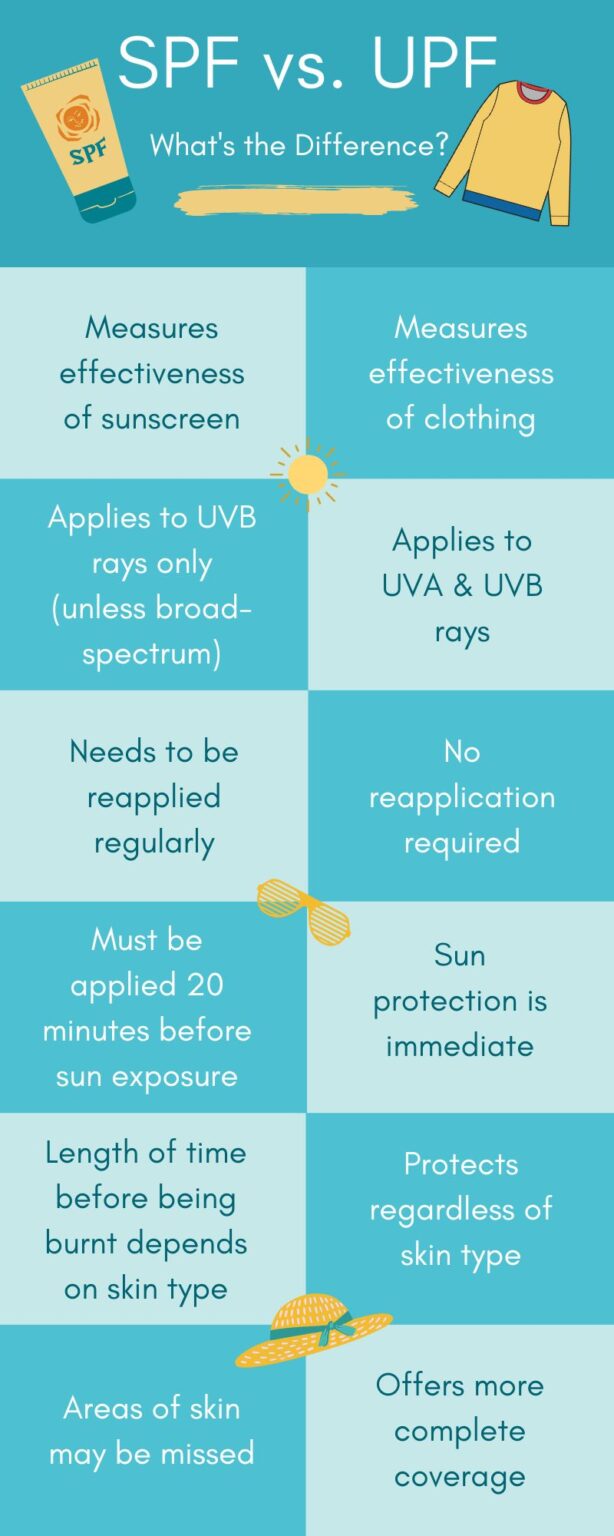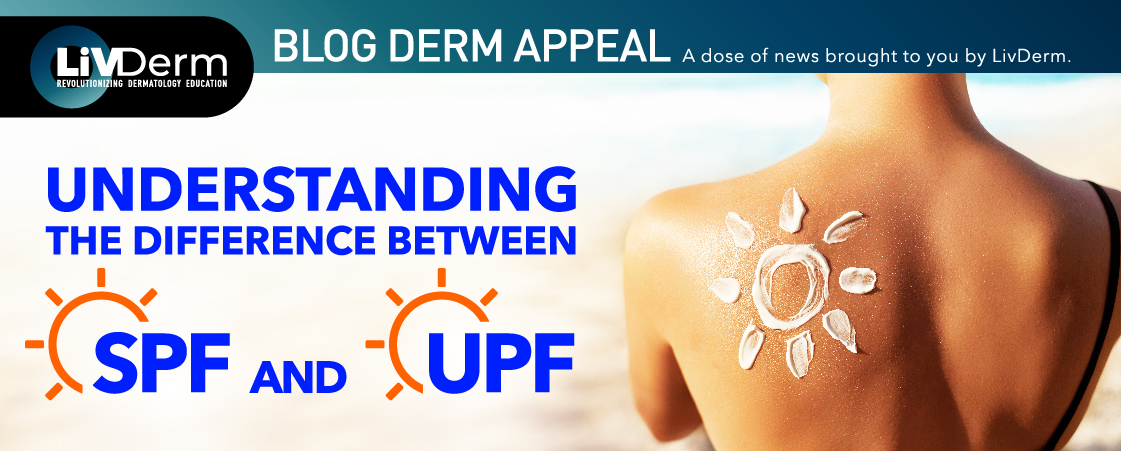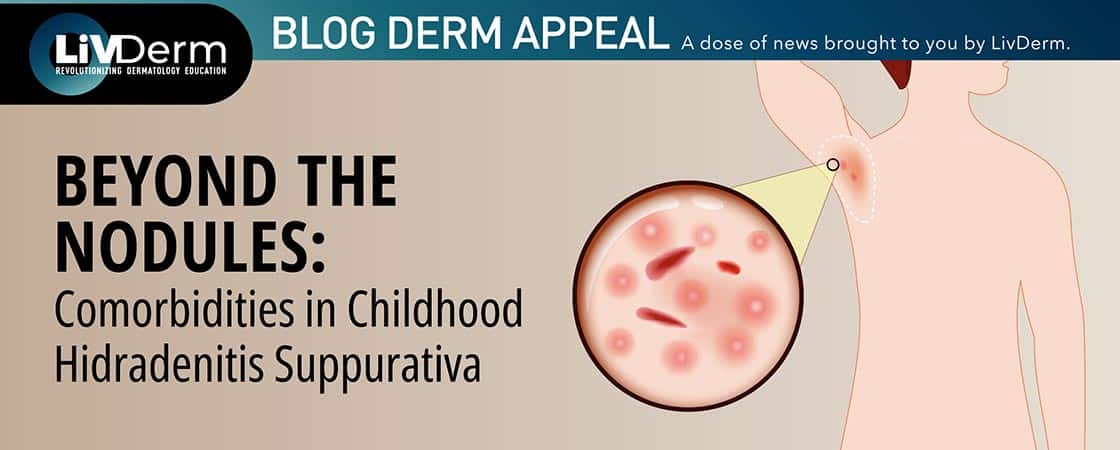While both SPF and UPF refer to a means of protecting the skin from the sun’s ultraviolet (UV) rays, there are a number of differences when it comes to how exactly the two offer protection. Making sure patients know and understand these differences can greatly influence the choices they make for protecting their skin. In order to do so a proper understanding of some broadly used terminology is necessary.
What are UV Rays?
Ultraviolet (UV) rays are invisible radiation that comes from the sun and are classified into two types. Longer wavelength UVA rays penetrate deeper into the skin damaging collagen and elastin, causing skin aging and wrinkles. The shorter wavelength UVB rays do not penetrate as deeply as UVA rays but are very high energy. They can damage skin cells and can cause DNA mutations. When choosing sunscreen, advise patients to opt for a broad-spectrum, water-resistant SPF of 30 or higher. Broad-spectrum sunscreens offer protection against both UVA and UVB rays.
What is SPF?
Sun protection factor, or SPF, is used to measure the effectiveness of sunscreen. Essentially, it is a measure of how skin can be exposed to the sun before becoming burned. However, it’s important to note that typically, SPF only takes into account UVB rays, which is why it is best to look for sunscreens labeled as broad-spectrum.
In order to calculate sunscreen protection, it is first necessary to determine how long it takes an individual’s unprotected skin to burn. Using an estimated burn time of 10 minutes for a person with fair skin using a sunscreen of SPF 15, means it would take that individual 150 minutes to sunburn.
Choosing the Right Sunscreen
When choosing a sunscreen, there are a number of factors patients should consider:
- Broad-spectrum sunscreen – This provides protection against both UVA and UVB rays.
- High SPF – The higher the SPF, the longer patients can go between reapplication.
- Water-resistant sunscreen – Good for water activities, this lasts longer on wet skin.
- Physical vs. chemical sunscreens – Physical sunscreens act as a shield and deflect the sun’s rays, whereas chemical-based sunscreens absorb them.
What is UPF?
Ultraviolet protection factor, or UPF, is used to determine the level of protection offered by fabrics. It is an indication of how much of the sun’s UV rays penetrate fabric and reach the skin. The higher the UPF number, the more protection it offers against both UVA and UVB rays. A UPF of 50 for example, will block 98% of the sun’s rays, allowing only 1/50th of the UV rays to penetrate and reach the skin. A UPF rating of 50+ is considered excellent whereas the minimum UPF rating is 15. Anything below that is not considered UV-protective. A fabric must have a UPF of 30 to qualify for The Skin Cancer Foundation’s Seal of Recommendation.
Choosing the Right Sun-Protective Clothing
As with sunscreen, sun-protective clothing is not all equal in the level of protection offered. Although the higher the UPF number, the higher the protection, there are also a few other factors for patients to consider.
- Color – Darker and brighter colors offer more protection as they absorb the UV rays instead of allowing them to penetrate and reach the skin.
- Fit – Tighter-fitting clothes can stretch and allow more UV rays to come through.
- Construction – Densely woven fabric such as denim, wool or synthetic fibers offer more protection.
- Coverage – The more skin that is covered, the more protection is offered.
- Treatments and composition – Certain chemicals and dyes that absorb UV rays may be added to clothing to enhance protection.
- Wetness – Typically, less UV protection is offered when fabric is wet which is why quick-drying options are believed to be better.

Key Takeaway
While both sunscreen and sun-protective clothing are important sun safety measures, they are not sufficient on their own. Combining a variety of methods offers the best protection. The Skin Cancer Foundation suggests wearing sunscreen, seeking shade wherever possible, wearing sun-safe clothing, a wide-brimmed hat, as well as UV-blocking sunglasses.
- https://www.rei.com/learn/expert-advice/sun-protection.html
- https://www.suniskillingme.com/upf-vs-spf-rating/
- https://www.skincancer.org/skin-cancer-prevention/sun-protection/sun-protective-clothing/#:~:text=How%20does%20UPF%20differ%20from%20SPF%3F,your%20skin%2015%20times%20longer
- https://www.sungrubbies.com/blogs/news-articles/90201091-spf-vs-upf-what-is-the-difference
- blog.coolibar.com/whats-the-difference-between-spf-and-upf/?gclid=Cj0KCQjwxIOXBhCrARIsAL1QFCbjvNabOSeTwulNIRA_rBdXL_5oSHdU5EAdR1o4OgPS1rBVqoi542caAtfSEALw_wcB

















